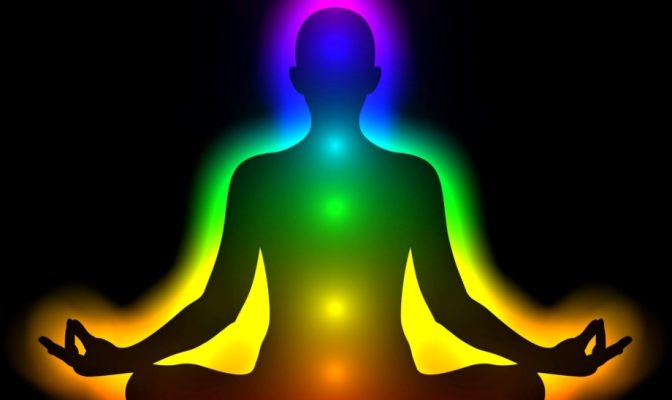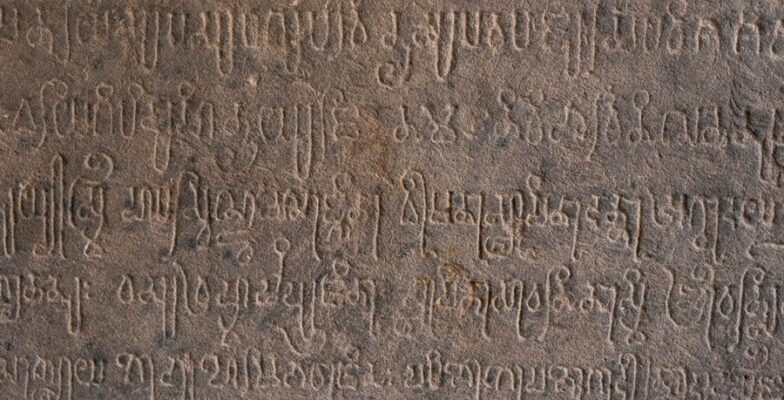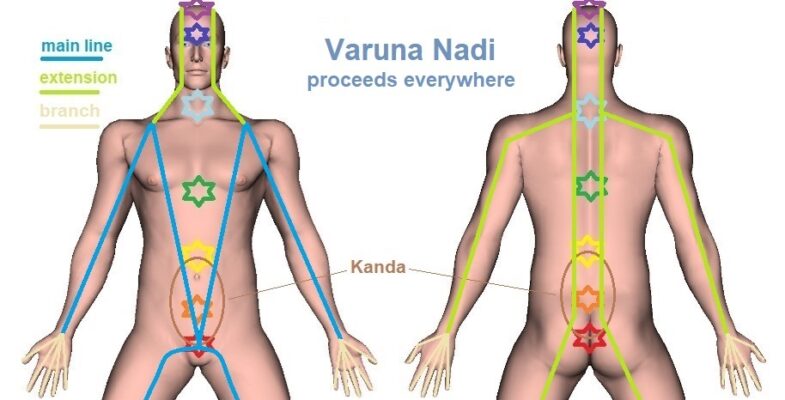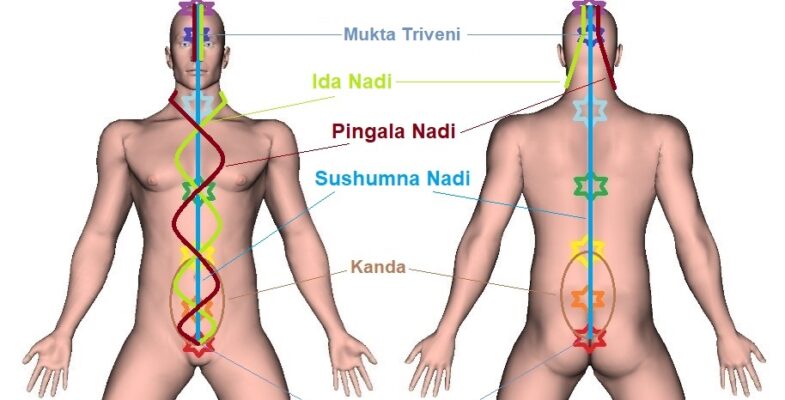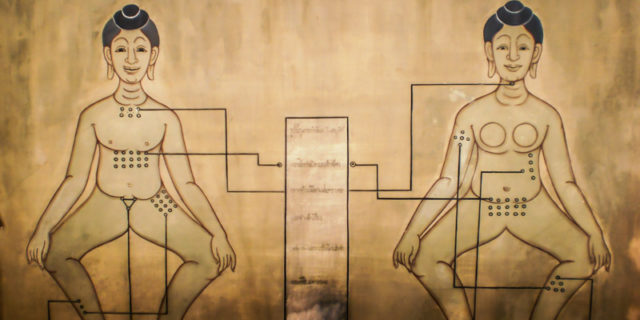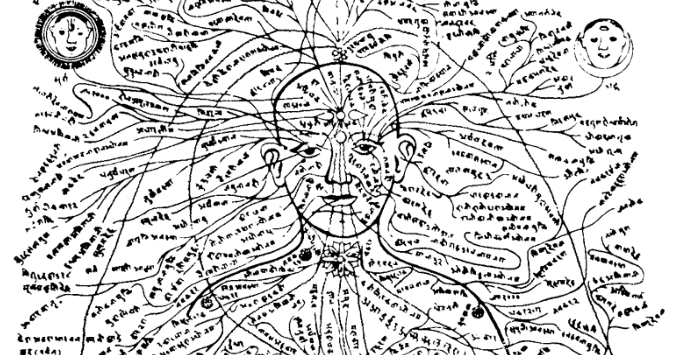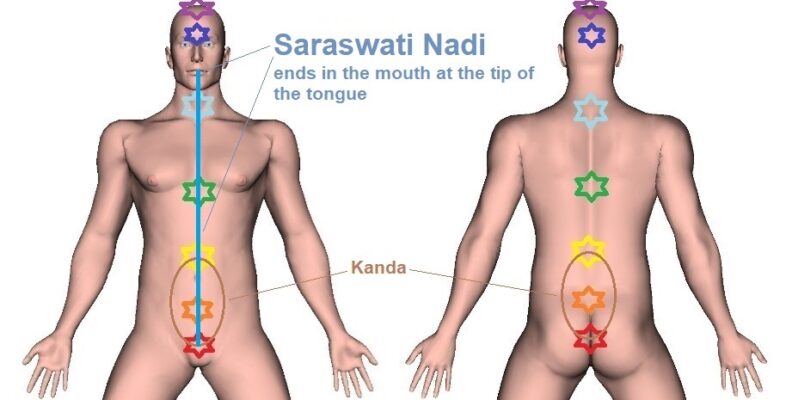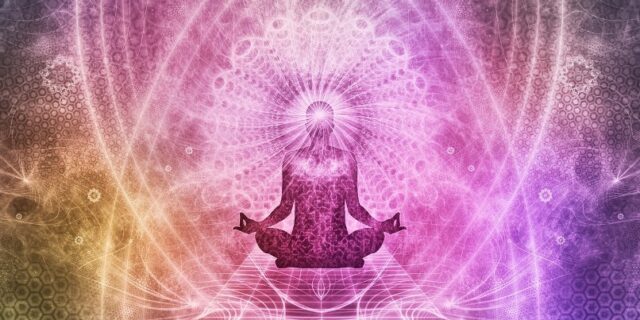
The Nadi Energy Channels that are considered the most important in Yoga are typically related to the “Gates of the Body.” Nonetheless, in the classical Yoga texts, the number of gates talked about by Yogis may vary, usually being nine (9), ten (10), or fourteen (14).
In Yoga, a so-called gate is a door, doorway, opening, aperture, or orifice of the body, which is thought to be a primary location for reception and distribution of Prana Life Energy, and a connection between the inside and outside of the body.

In a more general sense, in Indian spiritual philosophy and in Ayurveda, the gates refer to the means of a human being (the senses and specific organs) to experience the material world. Moreover, the gates are to be kept active and clean for a proper and seamless functioning of the body.
As for the Nadis, the gates usually represent the main ending point (termination point) of a Nadi pathway through the body. It’s also thought that human beings upon their death leave — that is, the subtle body separates from the gross body — through one of the gates.
In fact, in Hinduism, it’s believed that only by leaving through the tenth gate (the Brahmarandhra), one breaks the painful circle or rebirth and doesn’t need to come back on Earth to work on unresolved Karma. That is, the soul will be released in eternal peace.
Now, traditionally, the gates or body openings characteristically refer to the following nine senses and bodily organs: two eyes, two ears, two nostrils, the mouth, the genitals (generative opening and/or urethra), and anus (rectum or excretion opening), which together make nine openings, also called the Nava Dwara or Navadwara (the nine apertures) in Sanskrit.
As a spiritual practice, that is, notably in Yogic meditation, it’s thought that by deliberately “closing the nine gates of the body” one can achieve illumination i.e. Spiritual Enlightenment, which in a Yogic-energetic sense would result in conducting Prana Life Force through the Sushumna Nadi up to the Crown of the Head (the illustrious tenth gate).
So, commonly, the tenth gate is said to be the Crown of the Head, which corresponds to the location of the Sahasrara Chakra and the fontanel (the soft spot on top of the head), also called Brahmarandhra or “the door to God.” This tenth gate is also the ending point of the most important Nadi, the just mentioned Sushumna Nadi (i.e. Susumna Nadi).

Some also consider the navel i.e. the Kanda area, the fingers, toes, and the skin each a distinct gate, making an extra four gates on top of the ten we just talked about, as such coming to a total of fourteen gates.
Additionally, counting the left and right side of the body separately, you would even come to sixteen gates, that is — if you would make a distinction between left hand and right hand fingers, and left foot and right foot toes.
Well, finally, below an overview of the relationship between the principal fourteen Nadis and the Gates, in which a particular gate typically represents the ending or termination point of a Nadi pathway (i.e. trajectory through the body).
Mind that some classical scriptures claim that several of the Nadis mentioned here below have other (main) termination points, but the endpoints listed are today the most commonly accepted ones.
- Sushumna, ending at the crown of the head (the fontanel, also called Brahma Randhra or Brahmarandhra), which is the Tenth Gate;
- Ida, ending at the left nostril, which is the Ninth Gate;
- Pingala, ending at the right nostril, which is the Eighth Gate;
- Gandhari, ends at the left eye, which is the Seventh Gate;
- Hastijihva, ends at the right eye, which is the Sixth Gate;
- Yashaswini, ending at the left ear, which is the Fifth Gate;
- Pusha, ends at the right ear, which is the Fourth Gate;
- Alambusha, ends in the mouth, which is the Third Gate, or alternatively ends in the anus, which is the First Gate);
- Kuhu, ends in the genitals, which is the Second Gate;
- Shankhini, ends at the anus, which is the First Gate;
- Payaswini, ends at the right ear, which is the Fourth Gate;
- Saraswati, ends in the mouth (tip of the tongue), which is the Third Gate;
- Varuna, extends throughout the entire body, connected with the feet (toes), hands (fingers), and the skin (representing an Eleventh, Twelfth, and Thirteenth Gate);
- Vishvodhara, located in and around the navel (umbilicus), residing within the Kanda (navel area), which would be a Fourteenth Gate.







